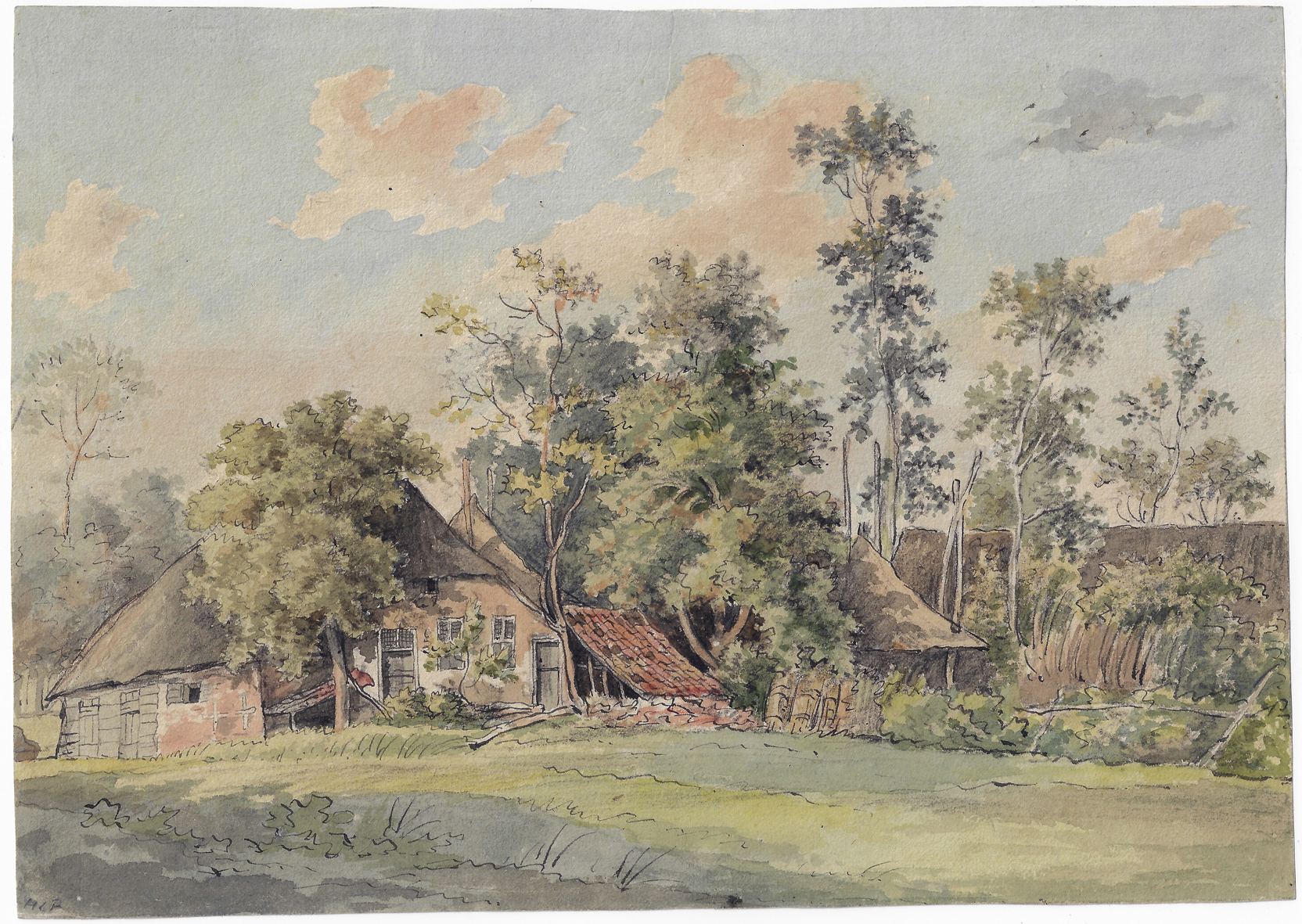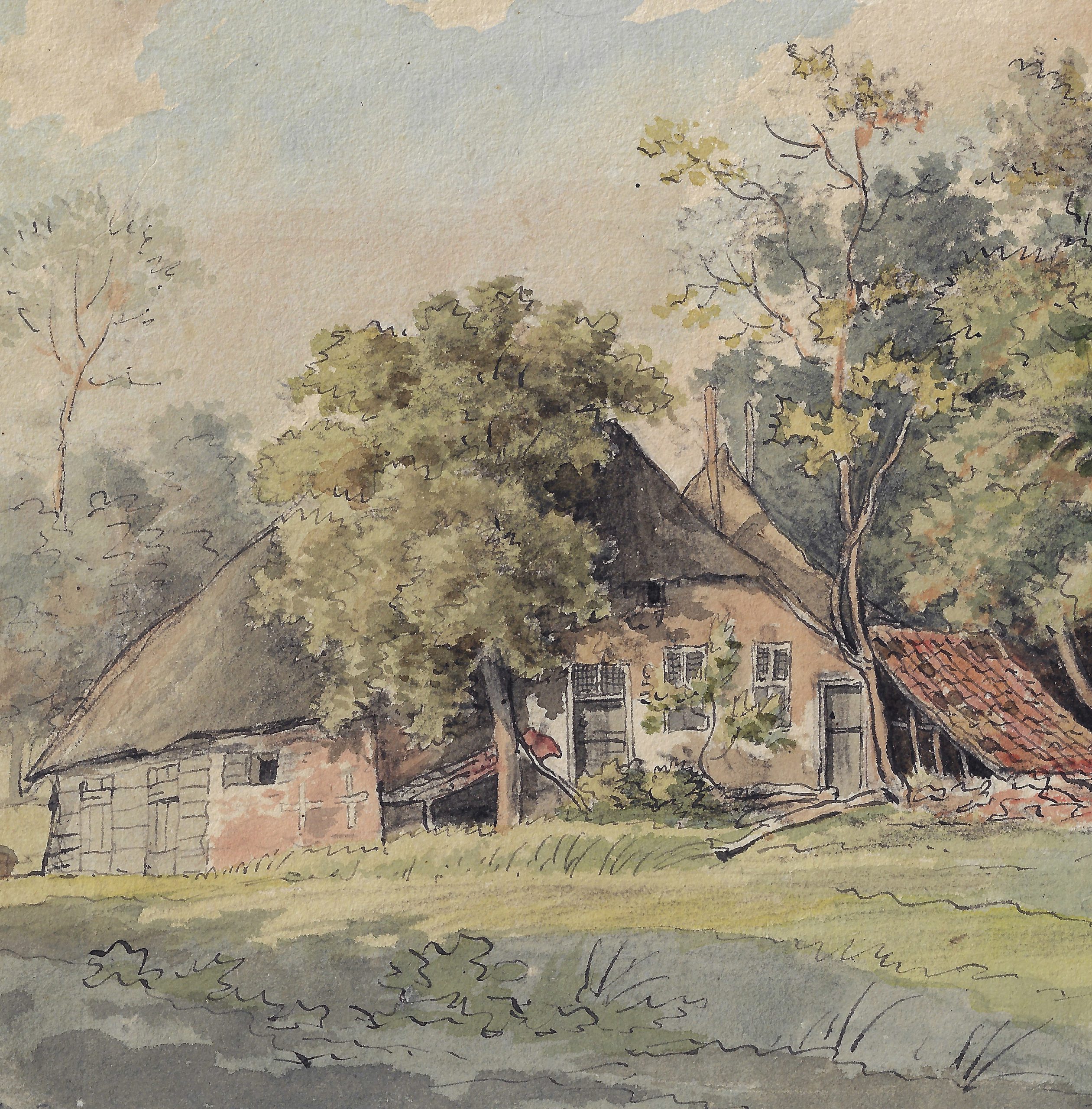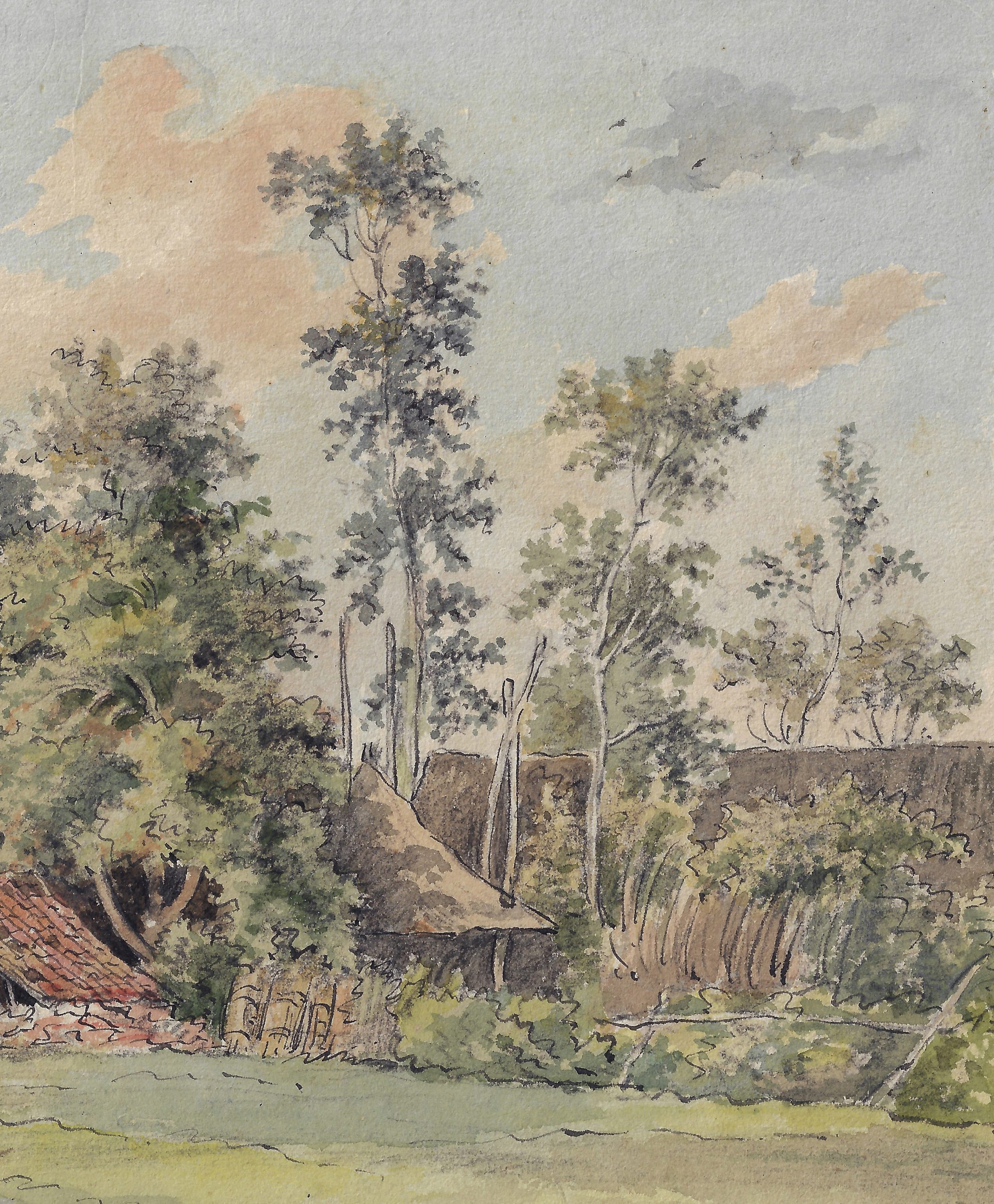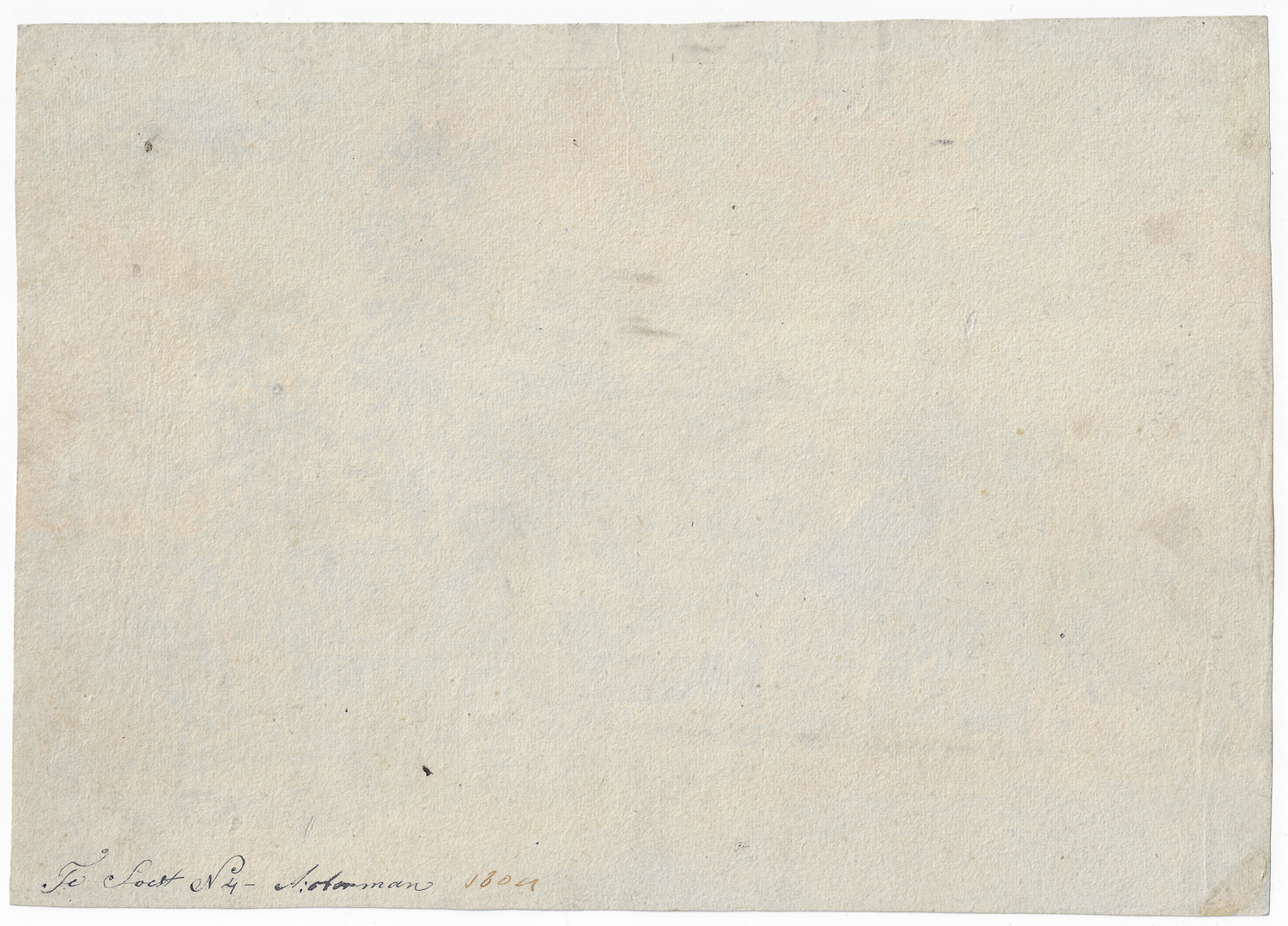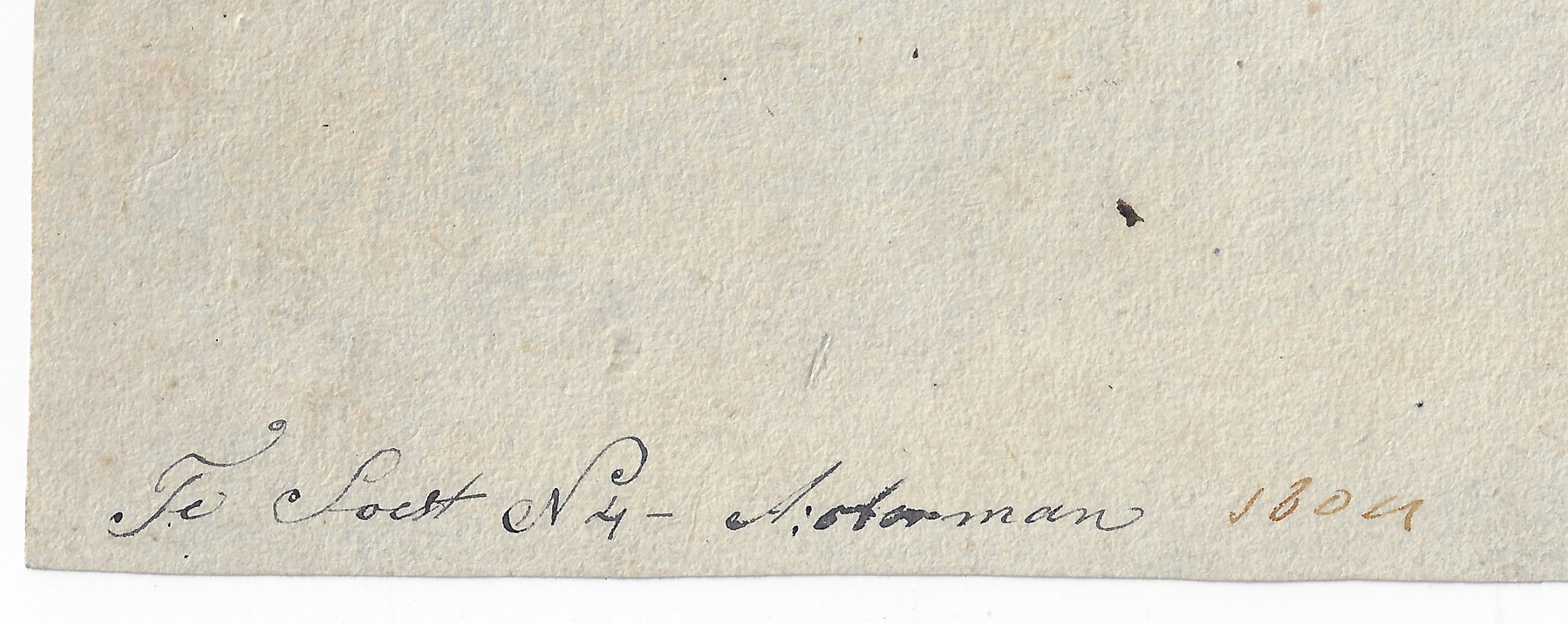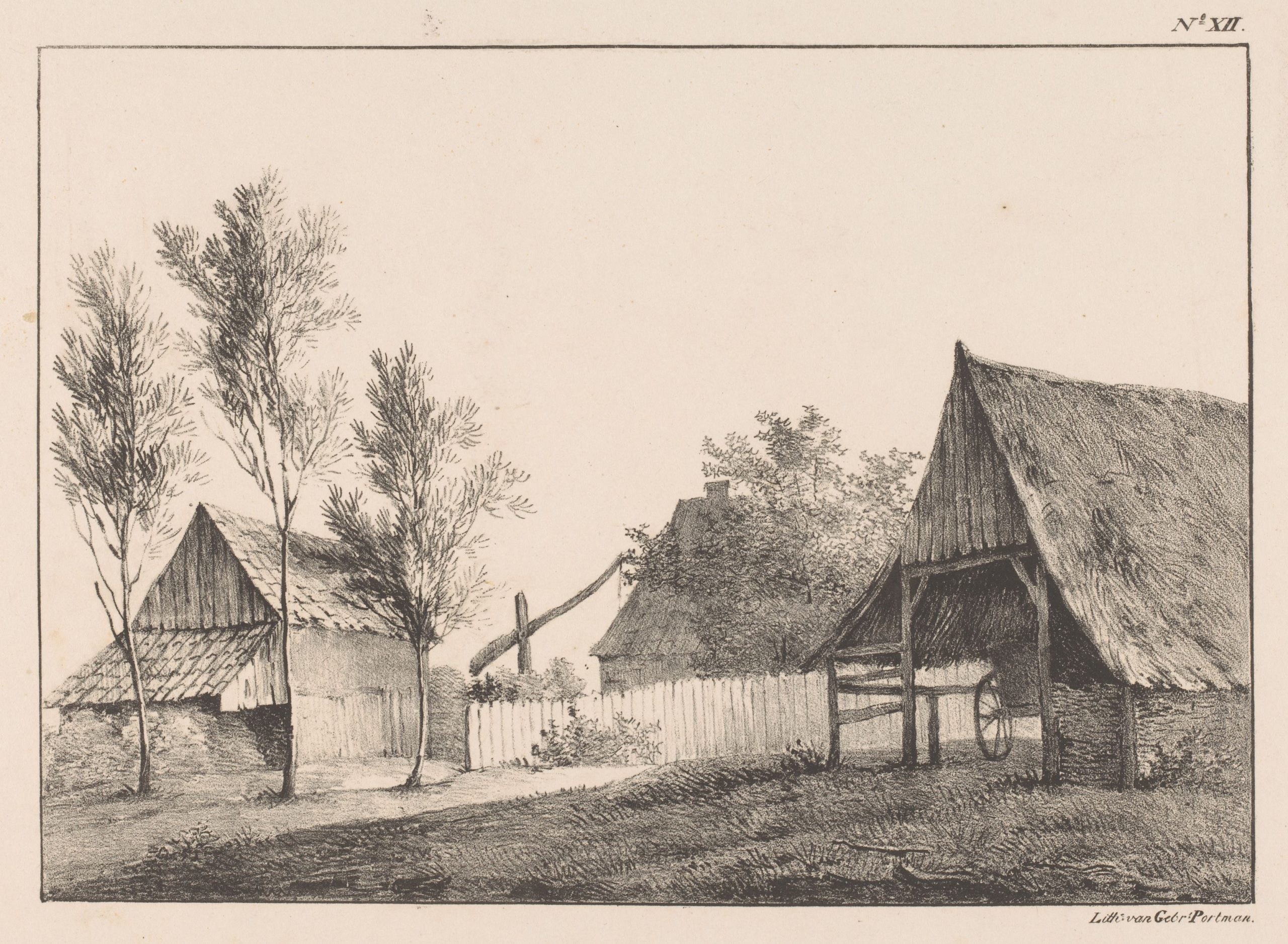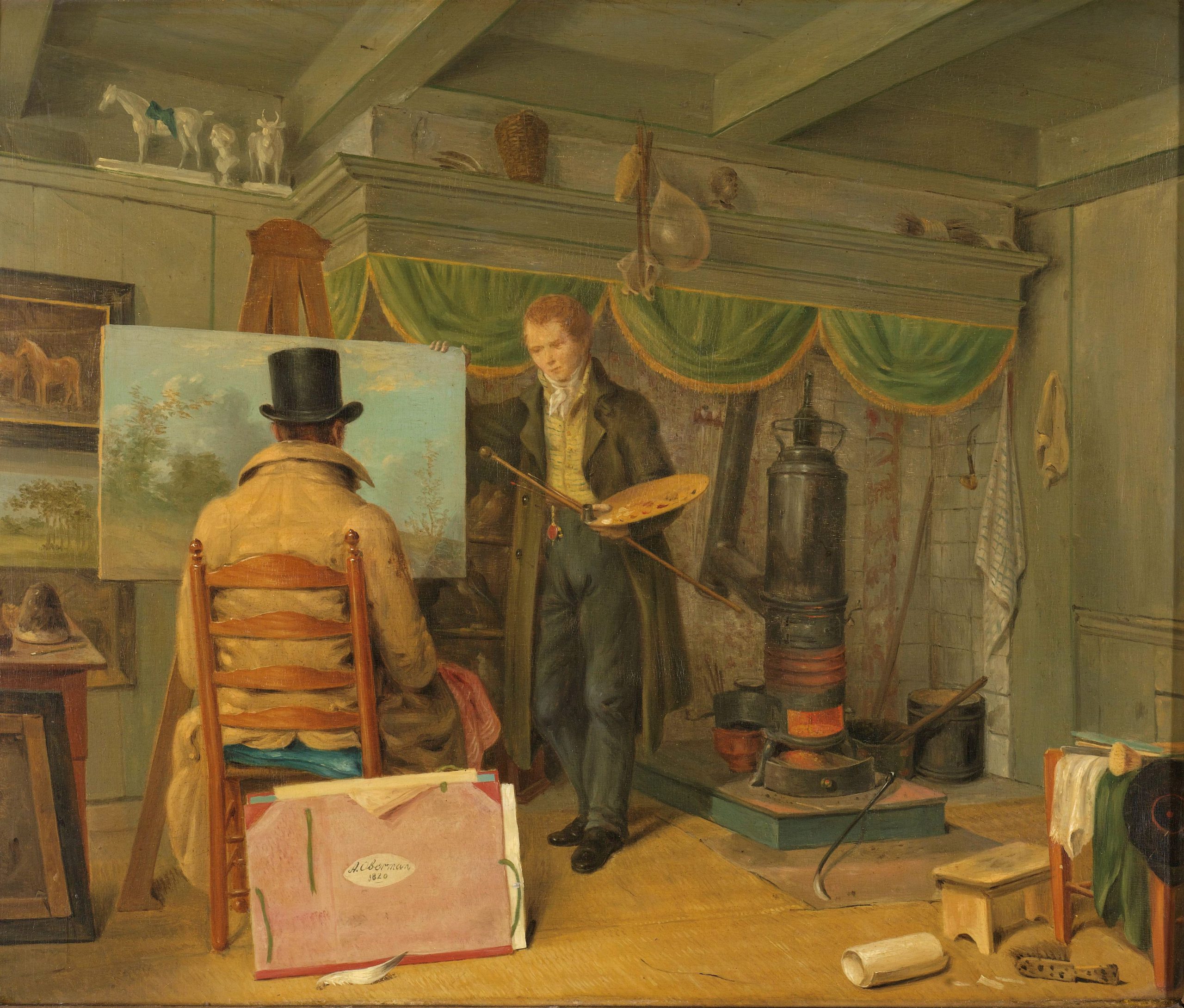ANTHONY OBERMAN (Amsterdam 1781 – 1845 Amsterdam)
Anthony Oberman (Amsterdam 1781 – 1845 Amsterdam)
View of the Village of Soest
Pen and black ink, watercolour, 179 x 251 mm (7.1 x 9.9 inch)
Signed, dated and inscribed on the verso, lower left ‘Te Soest N4 – A: oberman’ (pen and black ink) and ‘1804’ (brown ink)
***
Baptised in the Westerkerk in Amsterdam in July 1781, Anthony Oberman was the son of Jan Oberman and Grietje ten Cate.1 He was educated at the Stadstekenacademie (drawing academy) from 1798 and was a member of the Koninklijke Academie in Amsterdam in 1833. Oberman specialised in flower still-lifes and portraits of horses, for instance commissioned by the Amsterdam banker Adriaan van der Hoop (1778–1854).
Drawings by Oberman are extremely rare, only a few survive, mostly known from reference in historic auction catalogues.2 Our attractively coloured sheet is dated 1804, early in the artist’s career, and appears to have been drawn from life in Soest, north of Utrecht. It illustrates Oberman’s interest in the Dutch rural landscape, a rare them in the arts of the early nineteenth century – it can be compared to a series of landscape lithographs by Oberman, entitled Landschapstudien (fig.).3 An interesting painting of Oberman in his studio is preserved in the Rijksmuseum, Amsterdam (fig.).4
SOLD
1. For the artist, see: J. Knoef, ‘A.Oberman’, Maandblad voor beeldende kunsten 16 (1939), pp. 307-311 and W.F.Loos, ‘Keuze uit de aanwinsten: Anthony Oberman’, Bulletin van het Rijksmuseum 43 (1995), p. 65-66.
2. For instance auction Amsterdam, 1 March 1819 (Roos … Brondgeest), Album F, no. 11: ‘Een Gezigt bij Utrecht; door A. Oberman’ (to ’t Hooft’, for 3.5 fl) and auction J. Kobell, Amsterdam, 24 May 1815, Album G, no. 6: ‘Een Landschap met een Man trekkende voor een Schuit, met Couleuren, door A. Oberman’.7
3. Landschapstudien, RP-P-0B-29.331, lithographs, 255 x 402 mm, printed by Gebroeders Portman, shown here no. XII (inv. no. RP-P-1906-1867).
4. Signed and dated 1820, oil on canvas, 36 x 43.5 cm, inv. no. SK-A-4890; Gijs van der Ham a.o., Nederlandse kunst in het Rijksmuseum 1800-1900, Amsterdam/Zwolle 2009, p. 19, fig. 1.
